sculpture
-
Art & Places: Coca-cola Crateman, Cape Town
If you read my post about the Nobel Peace Prize laureates Statues at V and A Waterfront, Cape Town, you must’ve seen something interesting in the background. Something red.
Well, it caught my eyes too. It was red and gigantic, who could’ve not noticed that. What made it more interesting was the fact that it is made out of Coca-Cola crates. 4,200 crates to be exact, with an inner skeleton of scaffolding and cable ties to hold the structure.
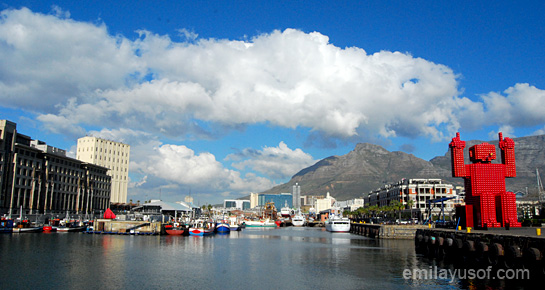
Elliot the crateman, V and A Waterfront, Cape Town, South Africa. July 2011.This giant crateman or cratefan stands 60 feet tall and weighs a whopping 27 tons. It was built by Porky Hefer and his team for Coca-Cola to draw attention to the ever-increasing importance of recycling both cans and plastic bottles. Elliot (named after a foreman of the team who built it) was built for the 2010 FIFA World Cup. According to a signboard there, all materials will be reused or recycled when Elliot is dismantled in 2011. But to verify whether Elliot is still in one piece, I checked with VandAWaterfront on twitter. The person-in-charge told me that Elliot will still be there throughout 2012. Don’t you love social media?!
So, if you travel to Cape Town, don’t miss the chance to ‘say’ hi to him!
-
Art & Places: Nobel Peace Prize Laureates statues, Cape Town
When visiting V & A Waterfront, Cape Town, South Africa, one cannot miss a row of Nobel Peace Prize Laureates statues at the Nobel Square.
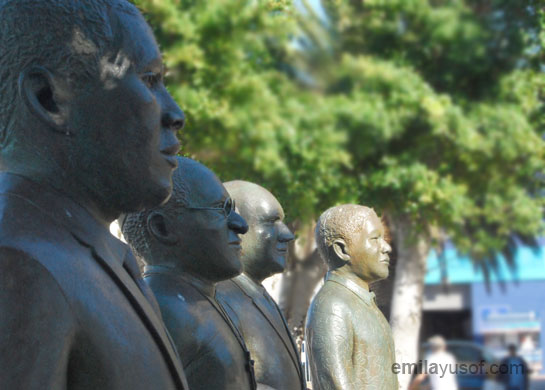
When my husband and I came across these four statues, we were excited to take photos. The four statues are arranged in a neat row for us to pose by, with the added bonus of Table Mountain as a backdrop–a photo opportunity not to be passed up!
The four Laureates are Albert Lithuli (1960), Desmond Tutu (1984), FW de Klerk (1993) and Nelson Mandela (1993). The larger-than-life-sized statues are casted in bronze and were the work of renowned Cape Town artist, Claudette Schreuders. These bronze statues were built to honour South Africa’s four Nobel Peace Prize Laureates for the role they played in achieving peace and democracy.
Nobel Square is situated just beside Waterfront Art Market.
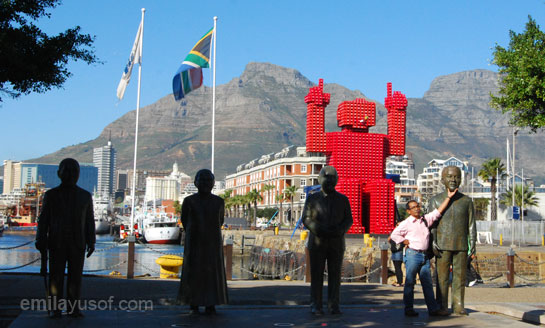
My husband posing with the statues. His favourite is of course, Mr. Mandela. I tell about the giant red crates statue later in another post.
-
Art & Places: Giant Sundial, Pudong, Shanghai, China
When I saw this giant sundial while visiting Shanghai last February, it reminded me of my son who is quite amazed with how a sundial works.
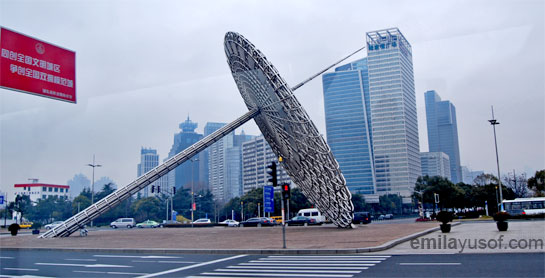

Completed in April 2000, this giant sundial sculpture, known as Oriental Light, is situated at the eastern end of Century Avenue, forming the entrance to Century Square, Pudong, Shanghai. This large scale sculpture which represents a huge time piece also serves as public modern art and the first of it’s kind of large-scale urban landscape sculptures in China. The large elliptical frame measures 400 square meters and the total length of the stainless steel tubes used exceeds 6,000 meters. Oriental Light was built based on an idea by French architect, Jean Marie Charpentier.
A sundial is an instrument that measures time by the position of the sun. Called “rigui” in Chinese, a sundial is a timepiece that indicates the daylight hours by the shadow that the gnomon casts on a calibrated dial in ancient China. A typical sundial is made up of a bronze pointer and a stone dial. The earliest sundial in the world was created some 6,000 years ago in ancient Babylon. And the earliest sundial of China, according to historical documents, was the flat horizontal dial plate, or the horizontal sundial invented in 574 AD.
-
Art & Places: Beaded wire art in Cape Town
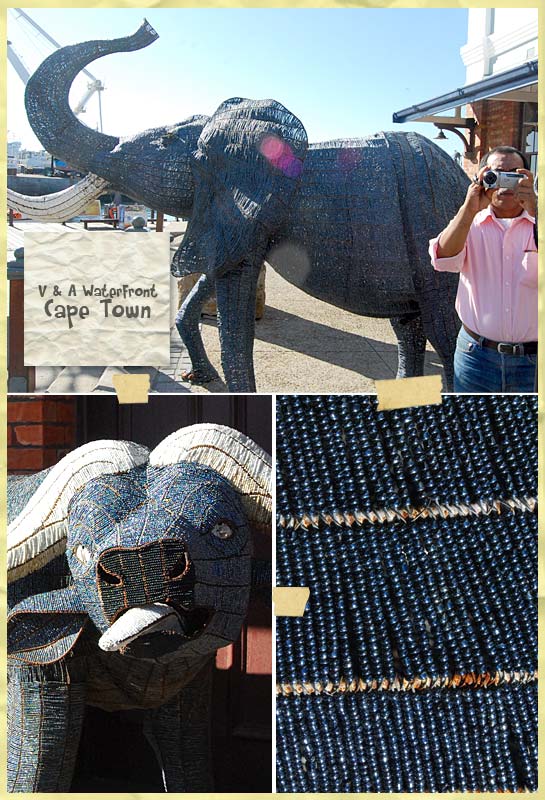
When I visited V and A Waterfront in Cape Town, wire beaded sculptures exhibited outside of the main entrance of African Trading Port captured my eyes. They were huge,very fine and the detailings were magnificent! I wonder how long does it take and how many beads were needed to create one big sculpture. But one thing for sure, this kind of art needs tons of perseverance. It is just amazing that these wire arts are created from wire, beads, tin cans, and other recycled materials. Other than big sculpture like the above, smaller pieces of the wire art in the form of keychains, dolls, decorations, etc, can be found at the Waterfront Craft Market.
According to this website, it is believed that this wire art originated in South Africa’s rural Northern Kwazulu-Natal. Young herd boys were the first to introduce these works of art. Designing wire creations from any recycled materials they could find, these boys produced some of the most magnificent, functioning appliances—they even built cars! Their inspirational wire creations encouraged other locals to participate in this highly marketable art form.